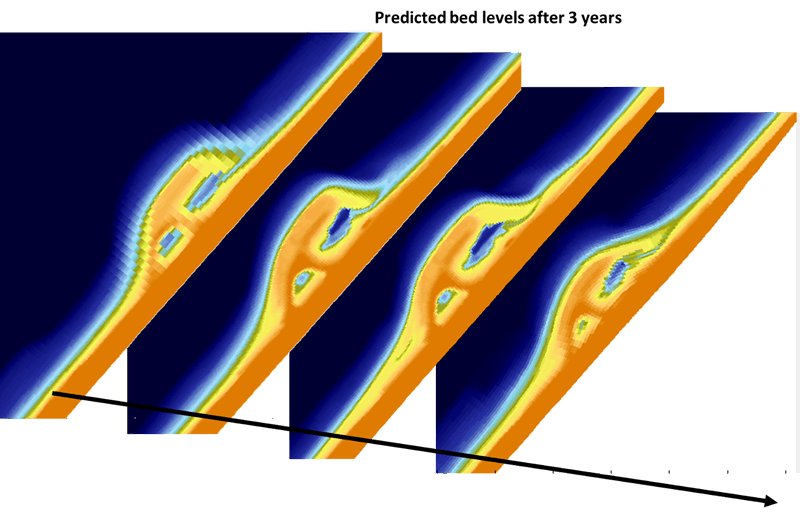Arjen Luijendijk1,2*, Matthieu de Schipper1, Pieter Koen Tonnon2, Sierd de Vries1
1 Delft University of Technology,
2 Deltares,
A common measure to mitigate erosion along sandy beaches is the implementation of sand nourishments. The design and societal acceptance of such a soft mitigating measure demand information on the expected evolution at time scales from storms to decades. Process-based morphodynamic models are increasingly applied to obtain detailed information on the temporal behaviour.
This research will highlight the advances made in morphodynamic predictions of complex sandy interventions over the last decade. We adopt the Sand Motor as a case study to illustrate the evolving performance of morphodynamic predictions in a quantitative manner. We start our assessment with the 20-year predictions conducted for the EIA in 2008 before the construction of the Sand Motor. This prediction is followed by the key findings of the predictions with a first-year calibrated model using data. In addition, the relative contribution of the most relevant nearshore processes is derived. Next, we will demonstrate a novel morphodynamic acceleration technique that allows for resolving the morphodynamics from storm to decadal time scales in one simulation. The 40-year predictions reveal an interesting impact of the Sand Motor on the overall behaviour of the Delfland coast. Finally, we present an integrated model that seamlessly predicts the morphodynamics in both the subaqueous and subaerial domains of the Sand Motor. Decadal predictions illustrate the need to be able to resolve the marine and aeolian processes simultaneously in one modelling framework. Especially when dynamics of coastal landscapes are subject of interest.
Combining the above-mentioned developments has led to a unique, open-source, process-based landscaping tool for (complex) sandy systems. This modelling framework will stimulate further collaboration within the NCK community; extensions into dune dynamics and vegetation development are already planned. Moreover, this work demonstrates the evolution from mono- to interdisciplinary forecasts of coastal evolution.

Figure 1 The evolution of model predictions for the Sand Motor evolution
I. Surname1*, F.N. Another-Surname2 , Y. Next-Surname2
1 University Name, Country; 2 Organization Name, Country
* Corresponding author: mail.name@organization.org


